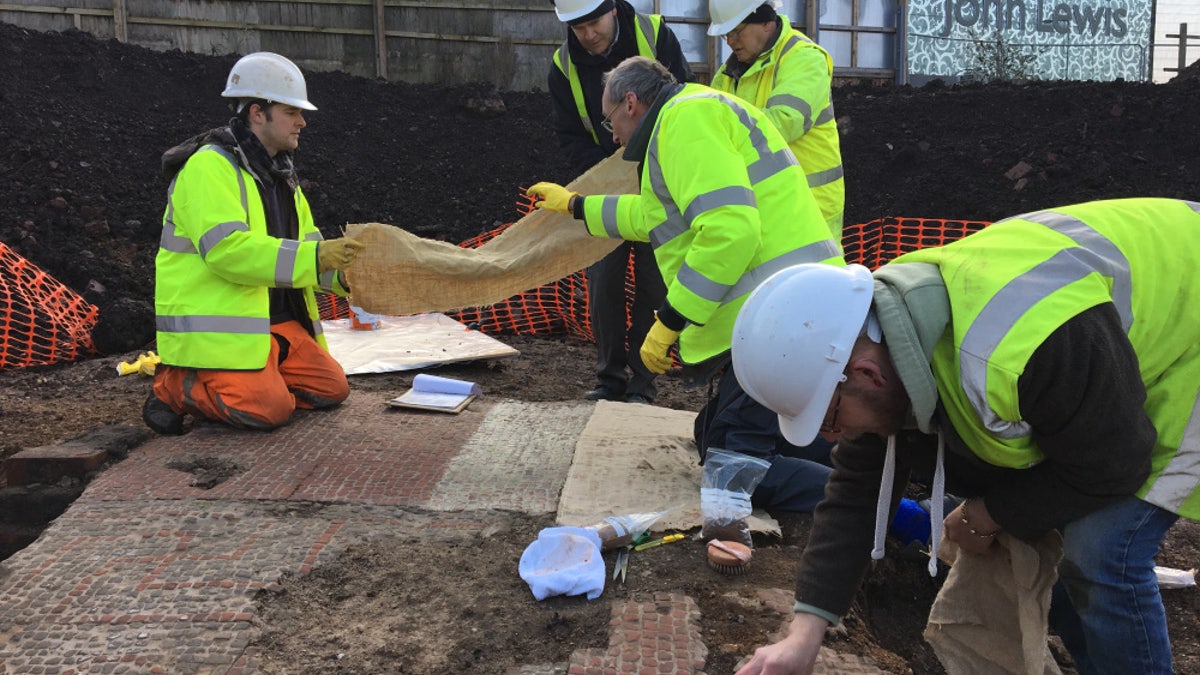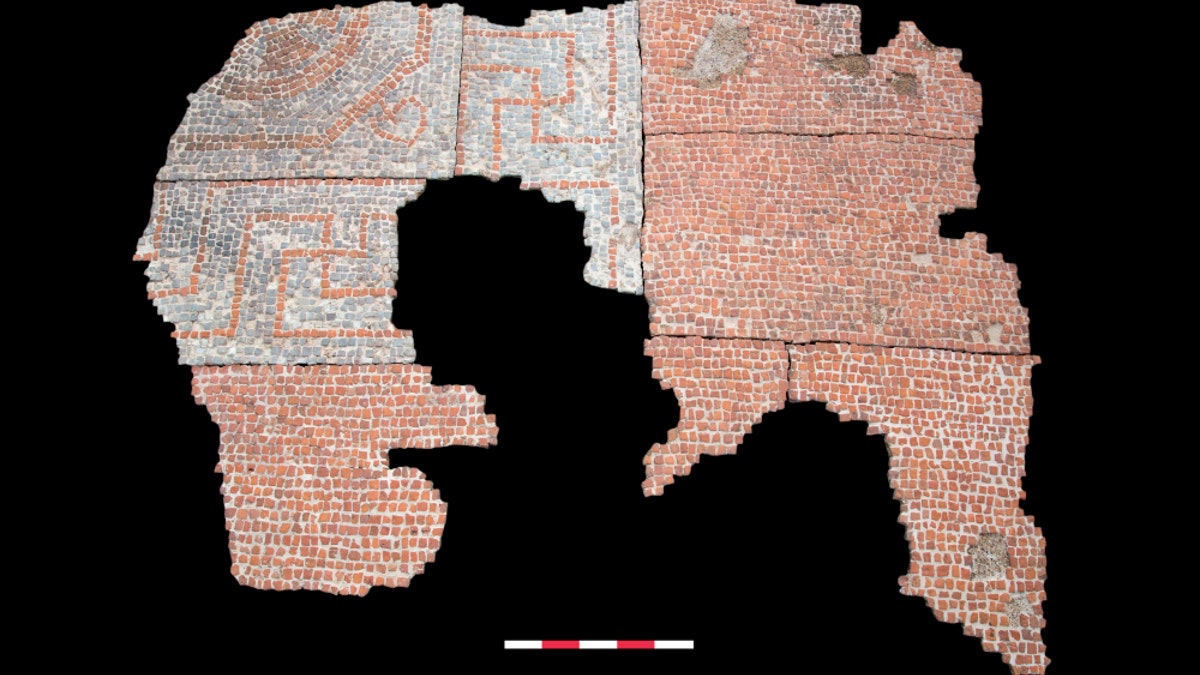
The team of conservators and archaeologists carefully prepare to lift the mosaic. (ULAS)
Archaeologists in the U.K. have revealed how they unearthed a 1,600-year-old Roman mosaic and lifted it out of the ground.
The mosaic floor, which dates from the late 3rd or early 4th century A.D., was discovered next to a parking lot in Leicester by the same team that found the remains of Richard III in the city.
Experts from University of Leicester Archaeological Services (ULAS) excavated the site during the winter of 2016-2017, and have just revealed details of how they lifted and conserved the fragile mosaic.
ENGLAND'S KING RICHARD III IDENTIFIED WITH DNA
Measuring 6.6 feet by 9.8 feet, the mosaic is made up of tiny cubes of stone and brick, known as tesserae. The tesserae were used to create a geometric border of ‘Swastika meander’ on the mosaic, as well as foliage and a central flower-like pattern called a hexafoil.

The conserved mosaic (ULAS)
“Lifting it was a huge challenge which was only successfully achieved because of the efforts of the entire team working closely together,” explained Mathew Morris, project officer at ULAS, in a statement. “The mosaic is made-up of thousands of tiny tesserae. These all had to be lifted and kept in the correct sequence to preserve the pattern on the mosaic.”
Archaeologists glued hessian to the mosaic’s surface to hold it together, then cut away the tesserae’s mortar base to slide thin boards underneath. “The mosaic was then carefully lifted in sections and taken to the studio of our conservator, Theo Sturge, who had the challenge of conserving and re-assembling it,” said Morris.
ROMAN SWORDS UNEARTHED AT ANCIENT CAVALRY BARRACKS NEAR HADRIAN'S WALL
Finally completed, the mosaic has been returned to Leicester for display.
“The finished mosaic looks fantastic, Theo has done an amazing job putting it back together,” explained Morris.
While the mosaic lacks the craftsmanship of the stunning Blackfriars mosaic that was discovered in Leicester in the 19th century, it nonetheless offers an incredible glimpse into Roman life in the city.
TEENAGER'S DISCOVERY OF ROMAN TREASURE TROVE DELIGHTS EXPERTS
“You can see the direction the Roman workers were laying the stones in, you can see at one point one of the lines started to bend off and so they’ve had to turn one line into three to create a straight edge again,” said Morris. “It’s these little human touches and errors that you can see in it that are important because they give you those glimpses into how it was made, who made it and their attitude to work, that gives you that real insight into the people of Roman Leicester.”
The mosaic is one of a host of fascinating Roman artifacts that have been unearthed in Britain in recent years. Last year, amateur archeologists in Southern England uncovered an elaborate ancient mosaic that is believed to depict the Roman gods Hercules and Cupid.
Also in 2017, a trove of artifacts, including Roman swords, was found at the site of the Vindolanda fort near Hadrian’s Wall in Northern England. Other finds include a stunning hoard of ancient silver in Scotland and a rare Roman coin that was discovered on a remote island in the Scottish Orkney archipelago.
In June 2017, researchers found 25 wooden ink documents at Vindolanda, offering a fascinating glimpse into everyday life in the Roman Empire.
Follow James Rogers on Twitter @jamesjrogers




















